10 Female Artists who contributed to the Art Movement in Jordan
Jodar Artistry celebrates Women’s Month & Mother’s Day by featuring 10 female artists who contributed to the art movement in Jordan
Faherelnissa Zaid (TURKEY 1901-JORDAN 1991)
Fahrelnissa Zeid was a Turkish artist best known for her large-scale abstract paintings with kaleidoscopic patterns. Also using drawings, lithographs, and sculptures, her work blended elements of Islamic and Byzantine art with abstraction and other influences from the West. Zeid was one of the first women to go to art school in Istanbul.[1] She lived in different cities and became part of the avant-garde scenes in Istanbul, pre-war Berlin and post-war Paris. Her work has been exhibited at various institutions in Paris, New York, and London, including the Institute of Contemporary Art in 1954.[2] In the 1970s, she moved to Amman, Jordan, where she established an art school. In 2017, Tate Modern in London organized a major retrospective of the artist and called her “one of the greatest female artists of the 20th century”.
Her largest work to be sold at auction [Pictured], Towards a Sky (1953), sold for just under one million pounds in 2017.
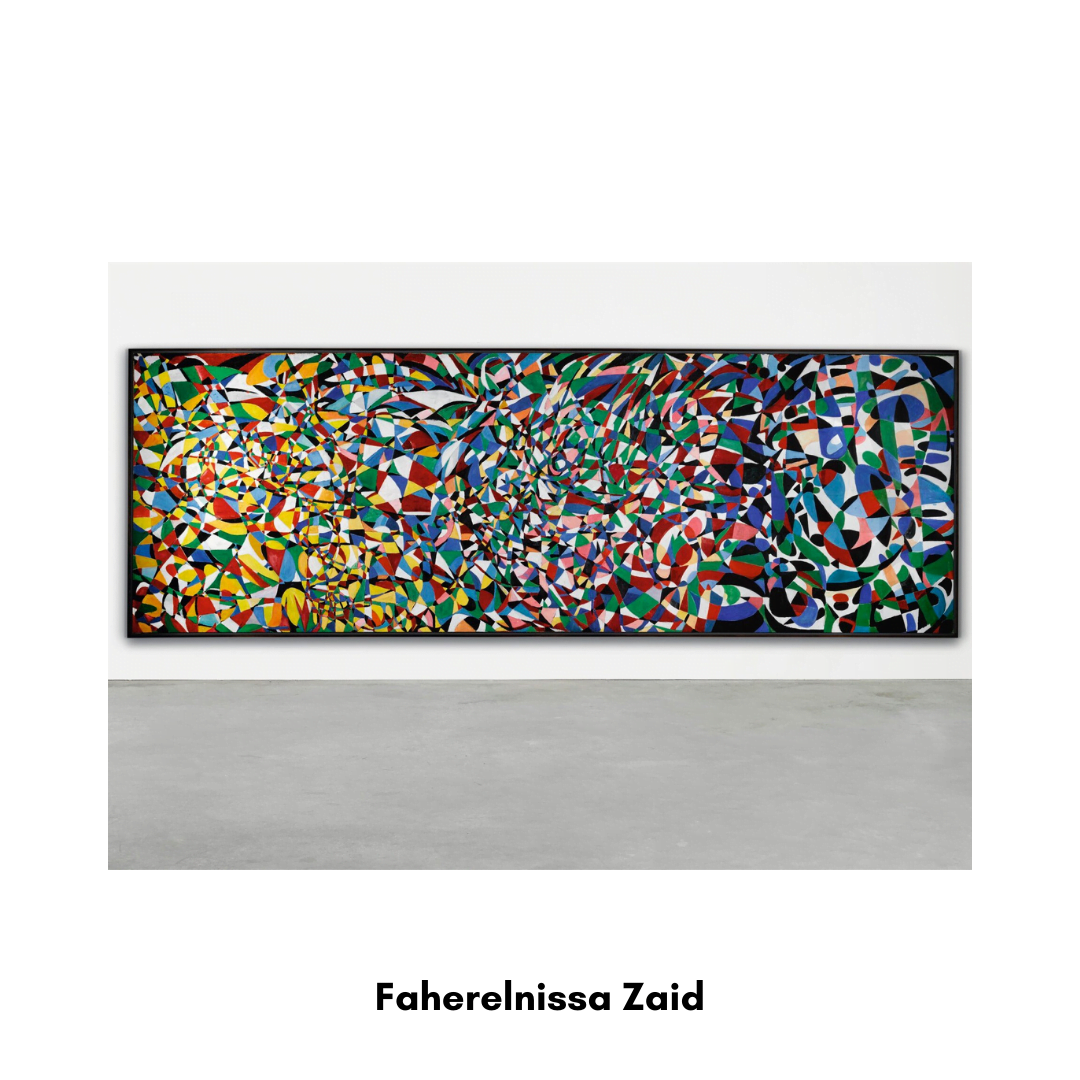
Source: Wikipedia.org Image credit: Sothebys.com @sothebys
Ghada Dahdaleh
Between 1984 and 2002, Ghada Dahdaleh held eight solo exhibitions in Canada and Jordan. She has participated in numerous group exhibitions in Canada, Jordan, Europe and the Far East. She was awarded the Sesquicentennial Award of the 150th Anniversary of the Development of Architectural Design in Toronto, Canada (1983); the Mr. & Mrs. Griffney Award for Painting, Ontario Gallery of Art, Ontario, Canada (1984); and a Poster Festival Award, Canada (1984). She currently lives and works in Amman.
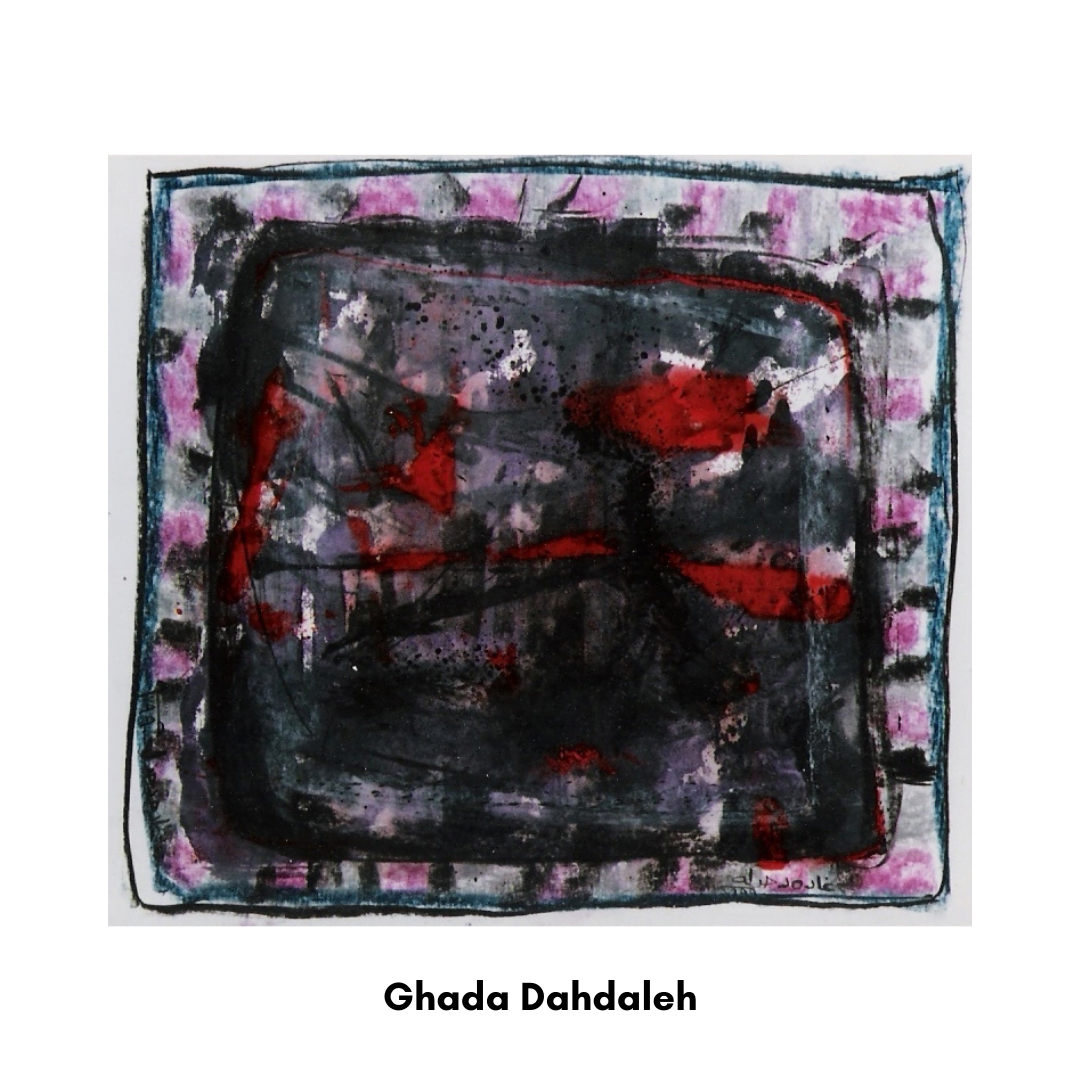
Source and credit: ghadadahdaleh.com @ghadadahdaleh
Hind Nasser
Hind Mango Nasser is a well-established artist, an inspiring patron of the arts and a cultural activist who lives and works in her home country of Jordan. Liberated from dominant art trends in cultural capitals, her work has been one in continuous movement filled with a lot of energy and enthusiasm. Far from being static or satisfied with itself or its own autonomy, Hind’s work has been at every moment unintentionally questioned.
It is not willingly that Hind deliberately rejects the standard that she has attained, but rather by an inward voice, an answering concern for what is happening in the canvas, for what gives it life and for what will follow next. This facilitates an easy and fast movement from one idea to another with a constant flow of new ideas. Predominantly, these ideas take an abstract form that ranges from free, spontaneous works to more static, precise ones.

Source and credits: hindnasser.com @hindnasserart
Mona Saudi
Mona Saudi is a Jordanian-Palestinian sculptor, publisher, and art activist.
Mona Saudi was born in Amman. She grew up in a neighborhood that was meters away from the Nymphaeum (ancient Roman public baths) and this was her playground. The proximity to a historic site gave her a profound respect for Jordan’s ancient art heritage, as well as providing her with a source of inspiration for her sculptures. She enrolled at the École nationale supérieure des Beaux-Arts in Paris, and graduated in 1973. In Paris, she fell in love with stone as a medium for her sculpture and has been using it ever since. Saudi mainly sculpts in stone. She uses stones from around the world to create her sculptures.
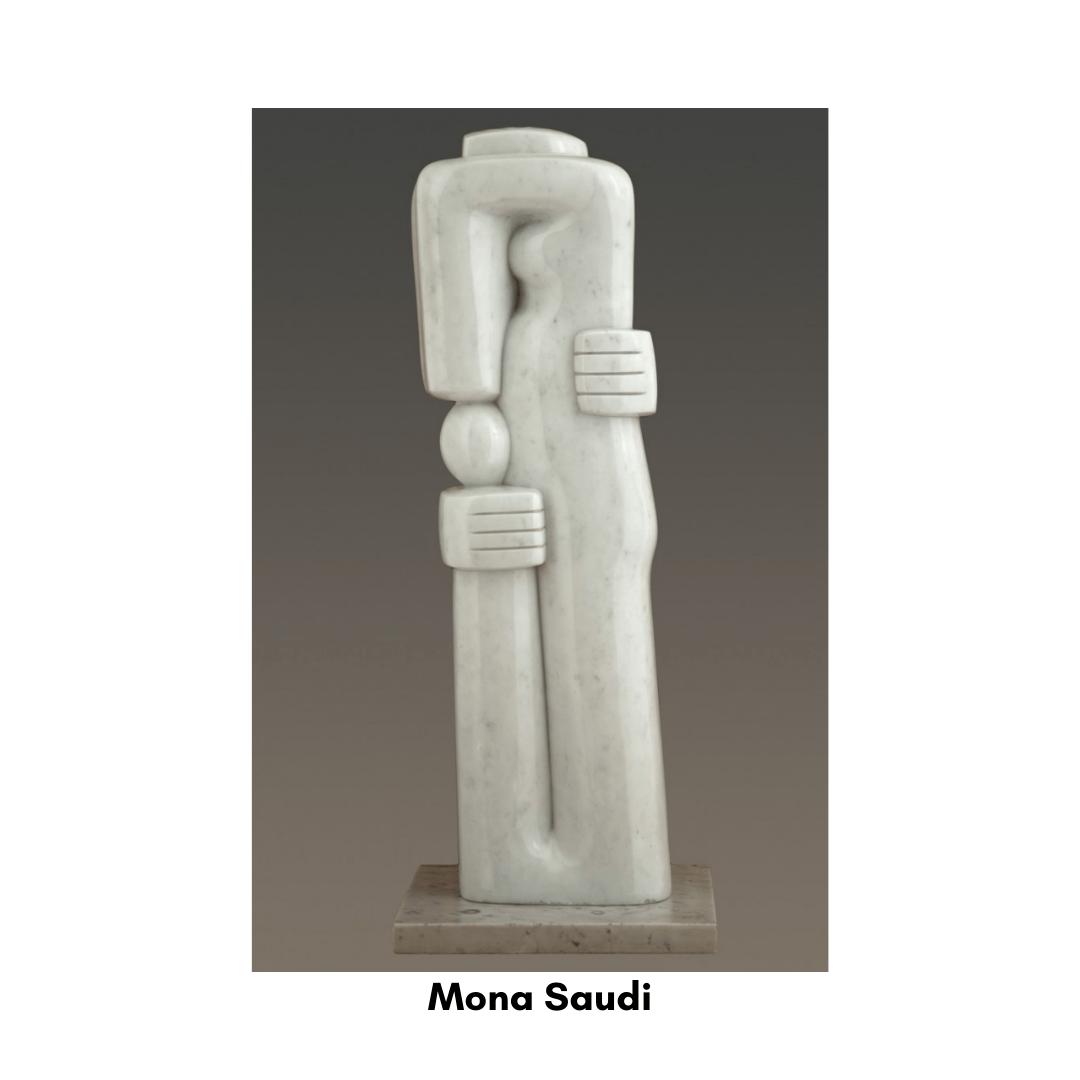
Source: Wikipedia.org Image credit: Darat al Funun – The Khalid Shoman Foundation @daratalfunun
Nawal Abdullah
Nawal Abdullah graduated from the Florence Academy of Art in Italy (1979). Since 1974, she has been exhibiting her works in solo and group shows in Amman and has participated in collective exhibitions in the Arab world, as well as in Europe, the U.K. and Canada. Abdullah’s abstracted landscapes and figures engage the viewer through harmonious, flowing brushstrokes and vibrant colour, and reflect a constant journey of self-discovery. She is a member of the International Women’s Forum (IWF), Jordan Chapter, and an active member of the International Forum for a Culture of Peace by Mediterranean Women Creators. She lives and works in Amman.
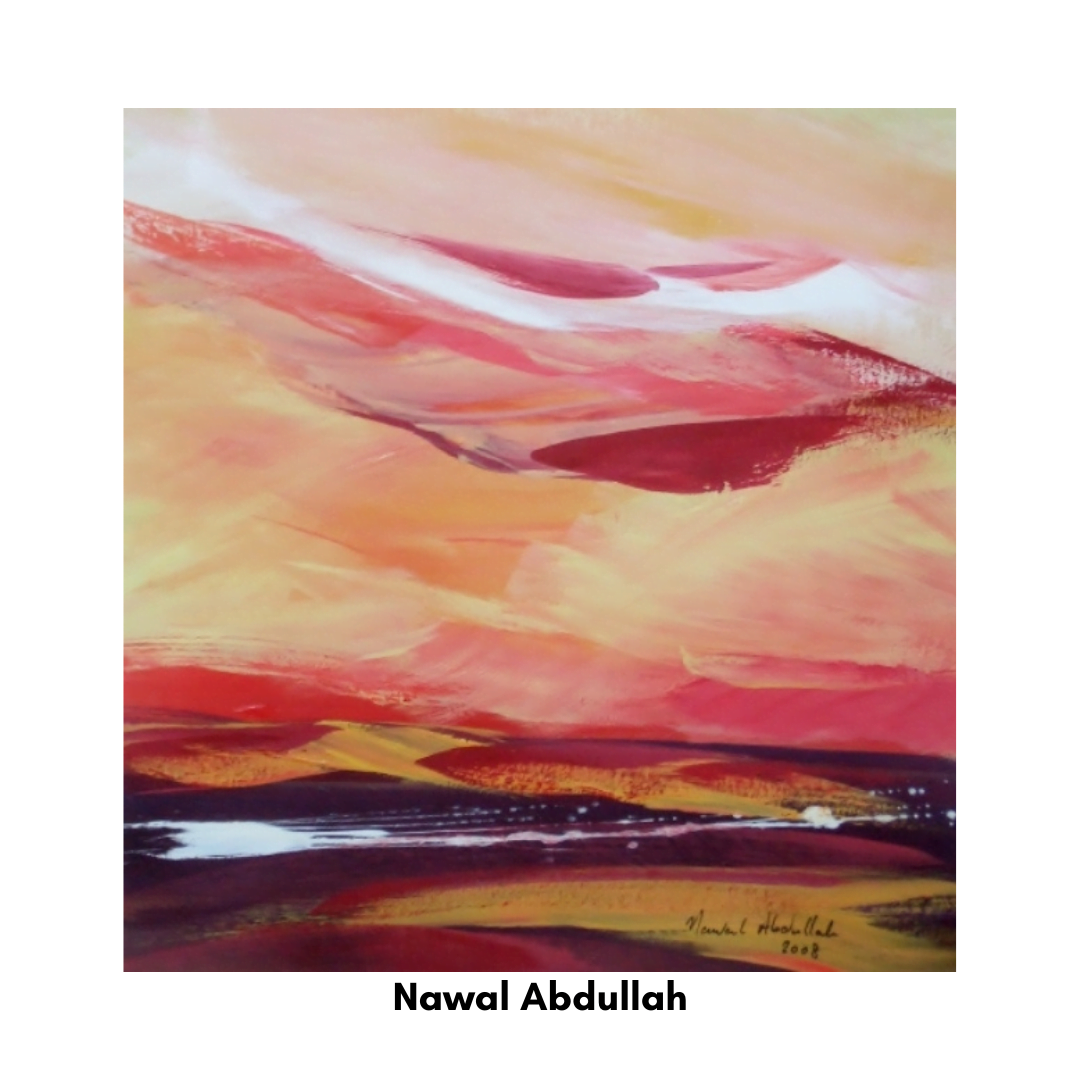
Source and Credits: nabadartgallery.com @nabadgallery
Riham Ghassib
Riham Ghassib is a painter whose colourful palette is inspired by nature. She is known for her depiction of the Jordanian countryside and daily life in Jordan. She studied art in the United States. Since 1987, she has held ten solo exhibitions and has participated in numerous group shows in the region and abroad. Her openness to “the magic of nature,” as she puts it, has contributed a great deal to the development of her work. Whereas her earlier works focused on social satire, she has recently been able, in her own words, “to penetrate the beauty and appropriate the aesthetic secrets of nature.” Her unique vision of the Jordanian countryside, its cities and villages, and her intense passion for nature, allow her to create canvases brimming with harmony and optimism.
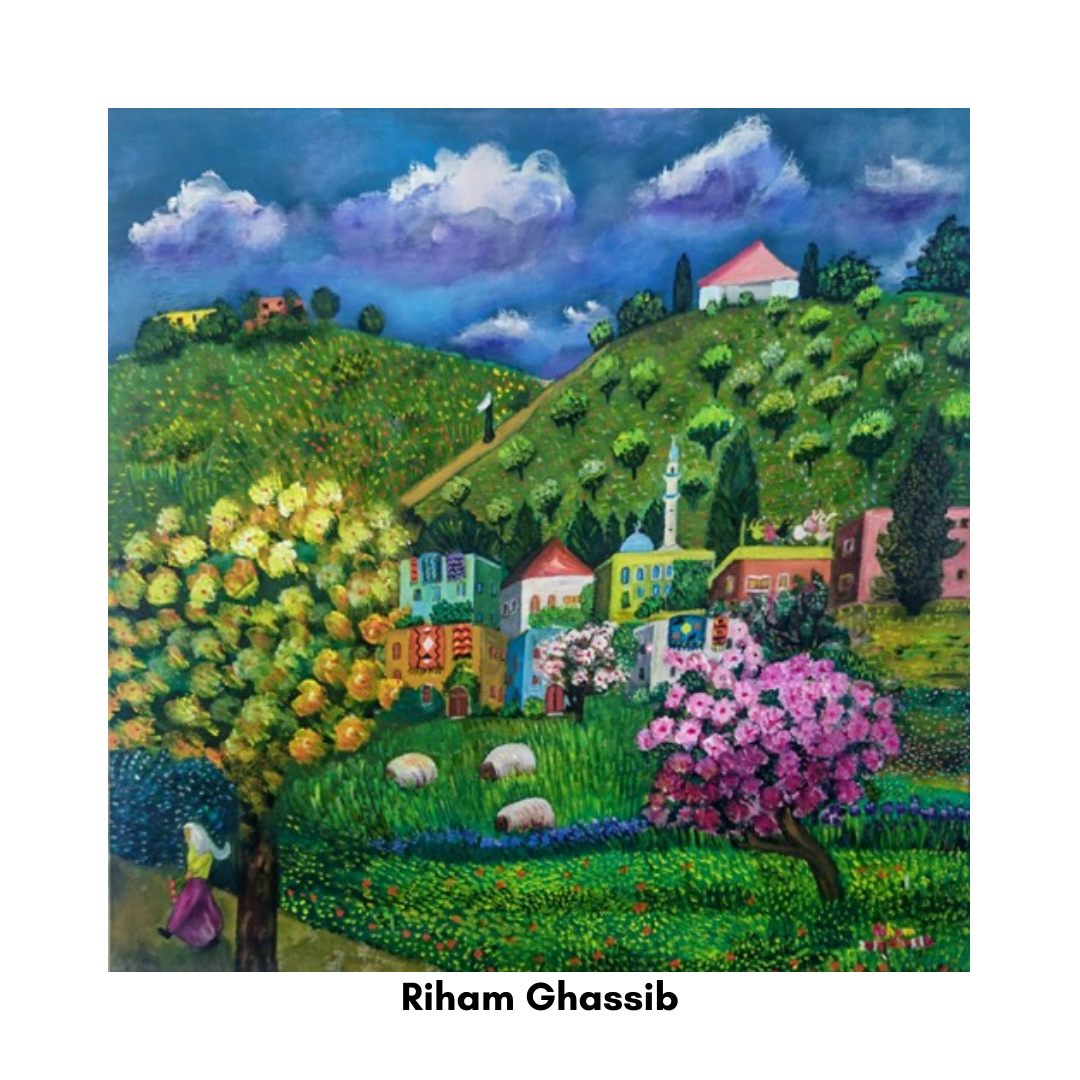
Source and Credits: nabadartgallery.com @nabadgallery
Rula Shukairy
“From an early age I felt the passion for art growing within me. Nature is my true source of inspiration, it allows me to express my inner worlds. At the beginning, I started with shapes and forms that were initially closer to realism… I continued experimenting in this manner for years, until I joined the Royal Institute for Fahrelnissa Zeid in 1983. I learned so much from her and I am forever grateful to her. She was an inspiring teacher, and my experience with her enriched me on more than one level. Her generosity was unconditional, and her love for art and art lovers was without bounds.”
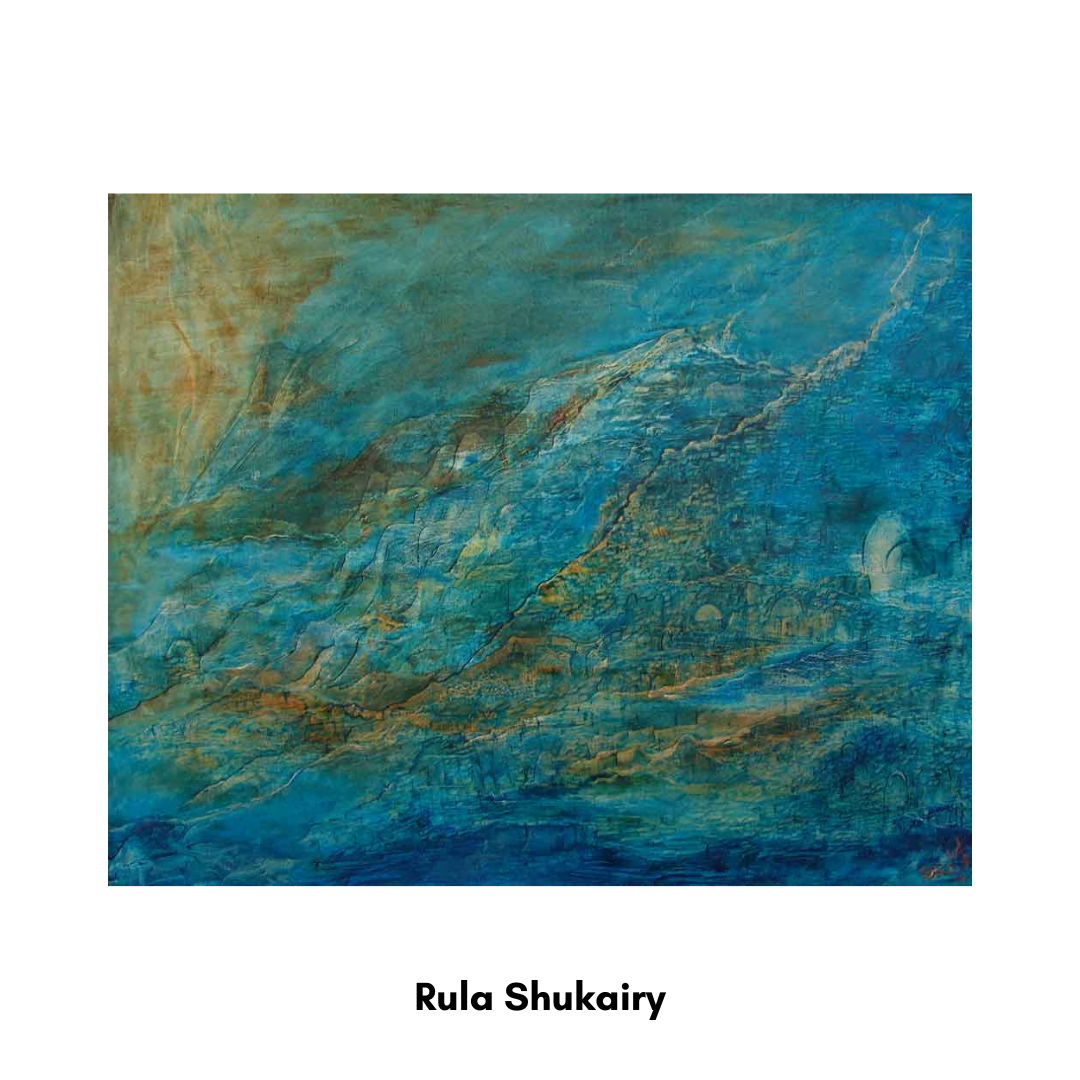
Source: Darat al Funun – The Khalid Shoman Foundation @daratalfunun Image credit: Jordan National Gallery of Fine Arts @jngfa
Samia Zaru
Samia Zaru is a multimedia artist, designer, painter and sculptor whose work includes welding and casting in metals. Among her most prominent pieces are the metal sculpture of the Haya Center (1964) and the AlHusain Gardens Seven sculptures (2000).
Zaru is a founding member of the Jordan National Gallery and the Artists Association and a pioneer of Installation Art in the Arab World since 1986. She had the first installation in 1988 in Amman on an area of 1000 square meters. She also works on the revival and development of traditional design in the Arab and Islamic World in her capacity as a consultant and speaker at seminars on Art and identity in design development in arts and crafts (Ircica).
A lecturer and an expert on art curricula tailored to Arab culture in schools and universities, Zaru is one of seven International experts with UNESCO to set the policy for the enhancement of arts in education.
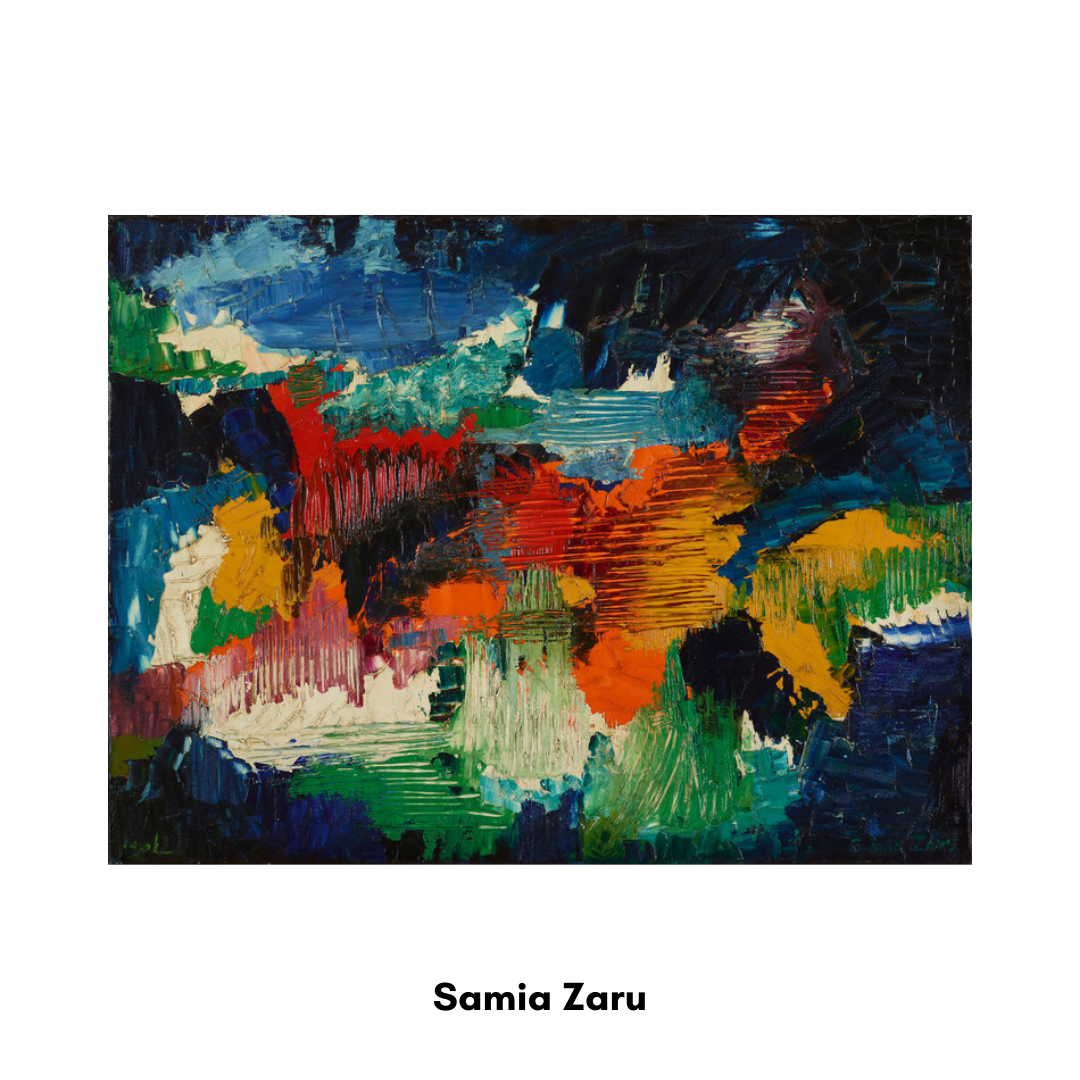
Source: takreem.org @TAKREEMorg Image credit: dafbeirut.org @dafbeirut
Ufemia Rizk
Ufemia Rizk studied at the American University in Beirut, Sorbonne University in Paris and Faherlnissa Zeid Royal Institute of Fine Arts in Amman Jordan where she studied art. At Dawson College in Montreal, she studied sculpture, printmaking and graphic design. Rizks art is the creation of an inner world to penetrate the mysteries of the universe. Her paintings concentrated mainly on geometric abstractions are a necessity of capturing and expressing a vision of cosmic forces.
The painting “Joyful Success,” [pictured] part of the exhibition Art in Embassies, was awarded the bronze medal by ” Le cercle des Artistes peintres et Sculpteurs du Quebec “. 2012 Montreal Canada.
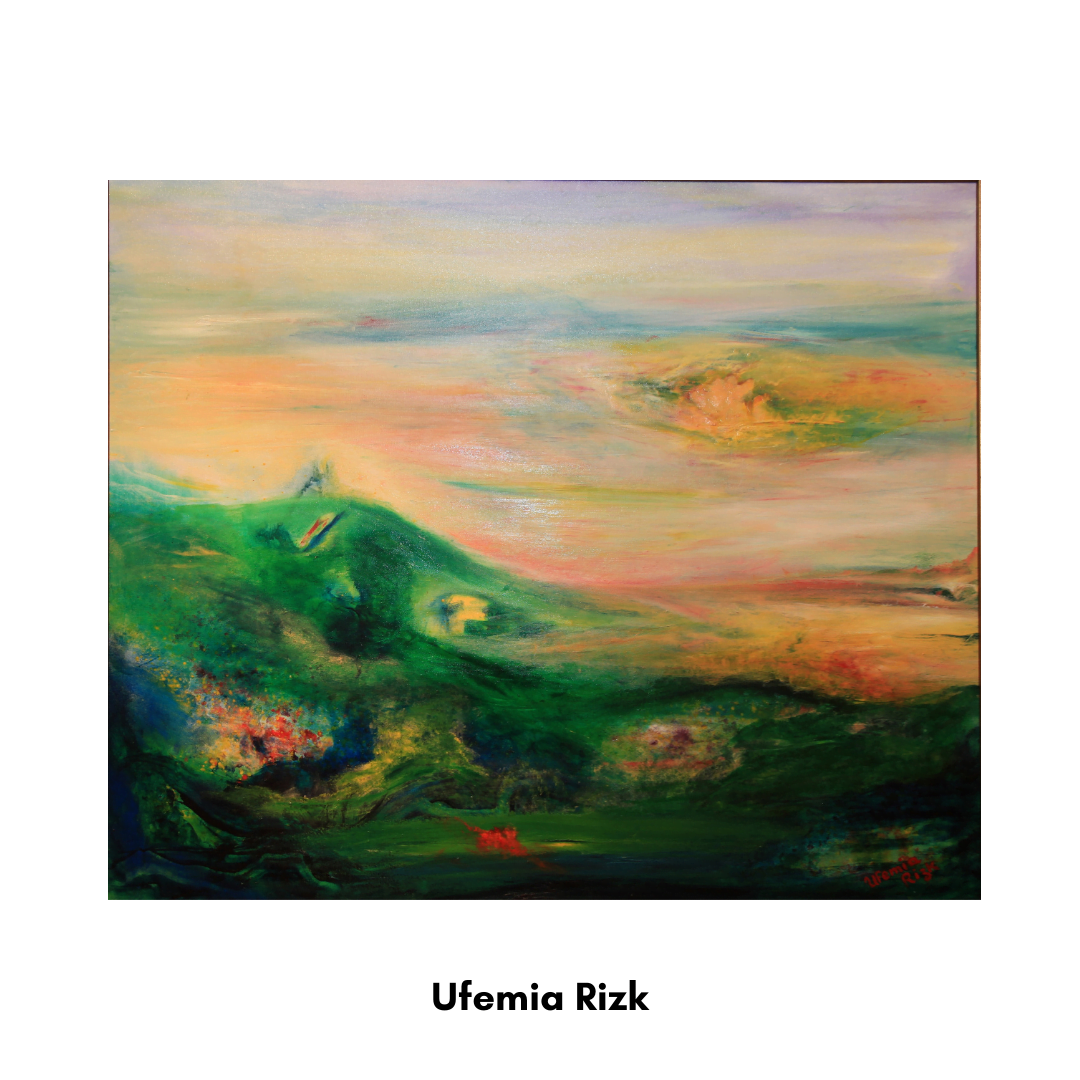
Source & image credit: art.state.gov @artinembassies
Wijdan
Artist, art historian, academic and diplomat, H.R.H. Princess Wijdan Al-Hashemi carries a Ph.D. in Islamic Art from the School of Oriental and African Studies (SOAS) (1993), University of London, and is a Fellow of SOAS (2010). She established the Royal Society of Fine Arts (1979) which founded the Jordan National Gallery of Fine Arts (1980). She founded the Higher Institute of Islamic Art and Architecture at Al Al-Beit University in Jordan (1993) and the School of Arts and Design at the University of Jordan (2002). She was Ambassador of Jordan to Italy (2006-2011). She is the first scholar to write the history of modern and contemporary Islamic art (1987) and has over 20 publications. At present she continues writing and working in the arts.
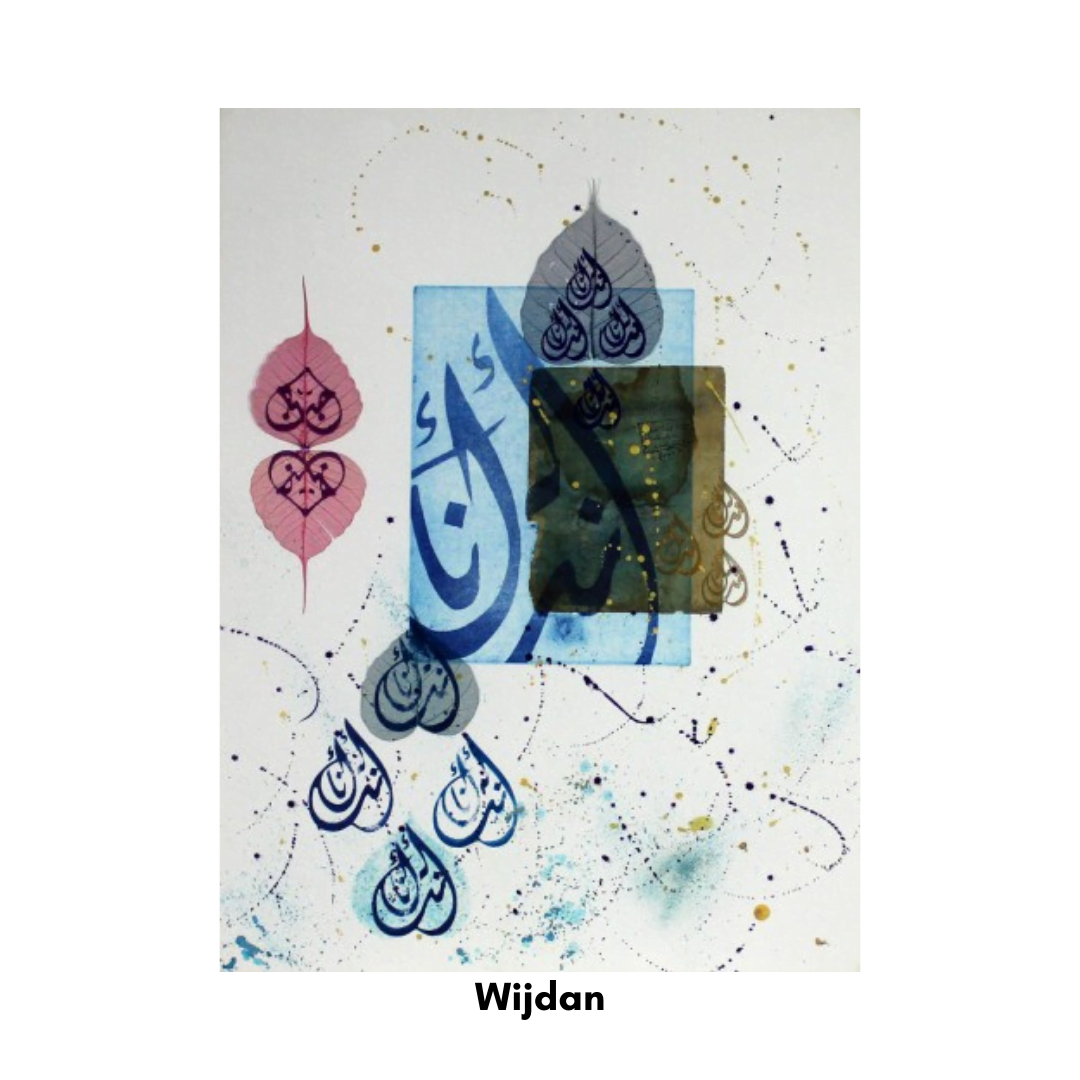
Image credit: Barjeel Art Foundation @barjeelart

